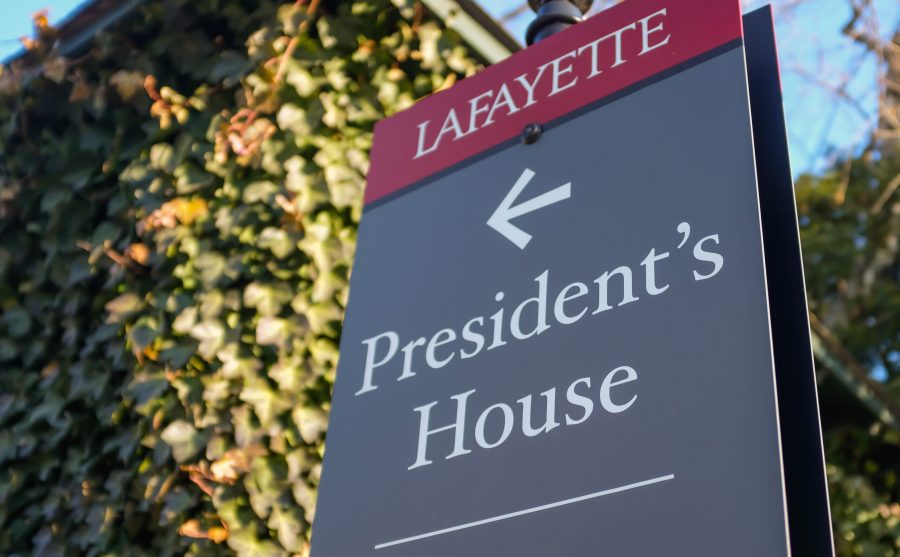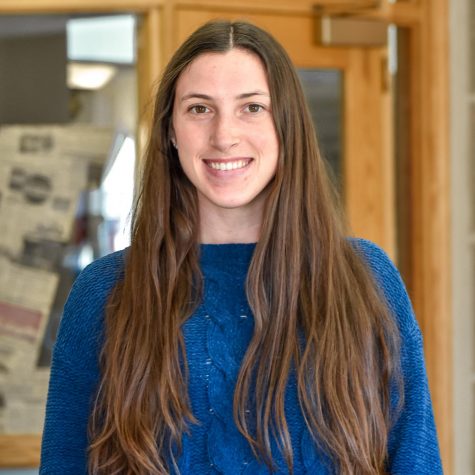Some student organizers just want to be students—and they are asking the college to help them do just that. Recently, many social justice organizations on campus have called for increased administrative support in matters of diversity, equity and inclusion to reduce the strain on students. And now, with a new presidential administration starting this summer, students are ramping up the pressure of their demands.
In part, these organizers want to hold the college accountable to its stated goal of hiring a president with a “sophisticated understanding of diversity, equity and inclusion,” according to the posted job description for the position. But they also want the administration to lift some of the onus of activism off of students, who are primarily here for their education.
“I think we are never given the space nor privilege of [just being students], if the institution has not been putting in the work and labor to help provide a safe environment for Black students,” said Fatimata Cham ’21, who is a representative on the student government equity and inclusion committee as well as a member of the Dear Lafayette Coalition, founder of Muslims Matter, president of Girl Up Lafayette and author of the book “Perfectly Imperfect.”
Over the break, members of Pards Against Sexual Assault (PASA) made similar remarks in terms of combatting sexual misconduct on campus in an open letter to the administration. In it, they called on the college to increase resources for advocacy and prevention to supplement the work that PASA currently does, focusing specifically on expanding the Office of Educational Equity to take on roles that students have been filling for years.
Savanna Touré ’21, who is a member of the Dear Lafayette Coalition, explained that a lot of student organizing work involves merely raising issues with the administration and bringing student concerns to light. She said she was frustrated that organizations like Dear Lafayette were often the ones initiating the dialogue over issues that she felt were obvious.
“Most of the things we’ve come up with, anybody could name,” she said. “We’re adults, but we’re adult-kids. The people in power, who have the resources…we want you to do research on [your] own.”
Other affiliates of Dear Lafayette, like Flor de Maria Selena Caceres ’22, said they wanted the next president to take the initiative to meet with student groups like their own, noting the frustration they felt when the administration was unaware of the issues students have raised in the past.
“We were accepted into this institution thinking that we were going to be offered these resources already, even before we came here,” Caceres explained. “If they keep asking students about what they want, students are going to be feeling very burnt out and discouraged, because they expect the institution to already know what we need.”
A significant component of the president’s role as a spokesperson for the college will be rhetoric and emphasis in matters related to diversity, equity and inclusion. Part of the expectation for the next administration will be to set the tone and “lead by example,” said President of Queer People of Color (QPOC) Lizbeth Arriaga ’21.
“How are they upholding [these values] with the staff that they hire, with the language that they use in communications?” she said. “What events do they attend on campus? How are they choosing to be involved? Which students are the ones they are choosing to pay attention to?”
Decisions about funding for identity-based organizations and other mechanisms of support the president has the power to pursue would be important as well, she said.
Many organizers said they were aware of the limits of rhetoric alone, however, and said they would assess a president’s commitment to diversity, equity and inclusion on the actions they take in office as well. Language and rhetoric are the “baby steps,” Caceres said, but the next and biggest step is action.
In terms of diversity, Dear Lafayette and other Black, Indigenous and People of Color (BIPOC) organizations have been pushing to increase the proportion of faculty who identify with a minority group. As of 2019, 3% of tenured faculty and 7% of tenure-track faculty identified as Black or African-American while 76% of tenured and tenure-track faculty are white-identifying, according to the Integrated Postsecondary Education Data System. Dear Lafayette demanded a yearly 3% increase in Black faculty and staff across all departments until faculty demographics are representative of “U.S. rates.”
The importance of diversity in the faculty is intertwined with inclusion on campus, Cham said. For BIPOC students, having faculty with similar backgrounds is not just comforting—it’s an essential part of their learning environment.
“Oftentimes, there’s this pressure to change your behaviors, change your language and the way you talk,” Cham explained. “Diversity isn’t just about…trying to fill a quota. The reason why BIPOC students pressure about diversity within faculty so much is because we want to feel like we belong, we want to feel safe, to feel like we can be authentically ourselves in an institution that has been designed structurally to support white people.”
President of the Association of Black Collegians (ABC) Grayce Walker ’22 added that it was important not just to hire Black faculty, but to retain them, “especially in positions that directly engage with students and are not hidden in offices across campus.”
Provost John Meier wrote in an email that the college is temporarily not growing the faculty but that it will be hiring to replace retiring faculty members, noting that, “We view every one of those searches as an opportunity to diversify Lafayette’s faculty and our curricula.”
He added that recent growth in diversity among the faculty has been encouraging but that the school is not in “a place where [they] can be complacent.”
“We have had some success and we need to build on that progress,” he wrote.
Notably, as of 2020, seven percent of students at Lafayette identified as Black or African-American, seven percent identified as Hispanic or Latino, four percent as Asian and the vast majority of the student body identified as white (67%), according to the Lafayette Common Dataset.
Attracting more BIPOC students would require emphasis on existing programs like the Posse scholarship and Our Beloved Community, according to Cham and Arriaga. But it would also require expanding these programs, adding new ones and increasing outreach into communities that are not typically accessed by Lafayette recruiters.
Organizers also have their eyes on goals related to equity. At the top of the list for Dear Lafayette are increasing the campus minimum wage, increasing BIPOC representation in student government, adding a community service requirement to the common core and abolishing the tiered housing system. Increasing the minimum wage, Walker noted, is “absolutely necessary, especially given that work study is included in people’s financial packages.”
Cham said that she believes student organizers and the college share a common goal: to make the school better. But she wants the college to pursue this goal as actively as she and other organizers do.
“We want students to feel comfortable here, we want students to feel like they belong here,” she said. “I think in order to do that, there needs to be mutual respect and transparency.”





































































































